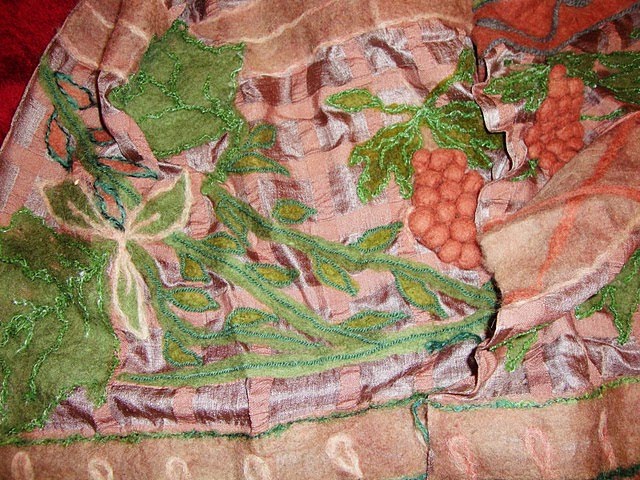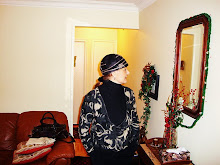. The wonderful scarves and hats in this page are created by Filtz Artist Biba Surmeyan!
bibafiltz@gmail.com
What is Felt or Filtz?
The process of felting yields infinitely varied results, with rich colors, forms, and visual appeal, as well as the technique of felting for wool yields a non-woven fabric with characteristics of unusual sturdiness, water resistance, and wind resistance. The resulting textile is known as felt or boiled wool or filtz, depending on regional terminology.
The Process of Felting
Felting is a process that causes a natural yarn, (mainly wool), to fray slightly and fuse to the other fibbers around it, creating a more solid appearance. Felting is done with special felting needles, which grab individual fibbers and drag them close to one another, thereby binding them and tightening the fibbers into one durable material where the barbed needles are used in such a way that the result achieved is a firm surface or sculpture.
Felting is possible because wool has microscopic scales which cause the fibbers to get caught when passing by each other.
 Finishing process of felting is done by wetting an item after it is finished and then drying it. The shrinking that occurs in this process tightens the weave of the knit creating a very dense fabric .Water and agitation will tighten the fibbers into one durable material and transform into a solid fabric (felt).
Finishing process of felting is done by wetting an item after it is finished and then drying it. The shrinking that occurs in this process tightens the weave of the knit creating a very dense fabric .Water and agitation will tighten the fibbers into one durable material and transform into a solid fabric (felt).The art of felting or Filtz is the oldest of the textile arts and is said to have originated in Asia. The history of this unique product is long and varied.[1]
Felting is the technique of treating wool so badly that it becomes beautiful. Felt is a non-woven fabric made from animal fleece.[2]
 Felting is a processing technique for wool which yields a non-woven fabric of unusual sturdiness, water resistance, and wind resistance. The resulting textile is known as felt or boiled wool or filtz, depending on regional terminology.
Felting is a processing technique for wool which yields a non-woven fabric of unusual sturdiness, water resistance, and wind resistance. The resulting textile is known as felt or boiled wool or filtz, depending on regional terminology. For those of you who are interested in felting, About.com Knitting Guide, Sarah E.[3]













